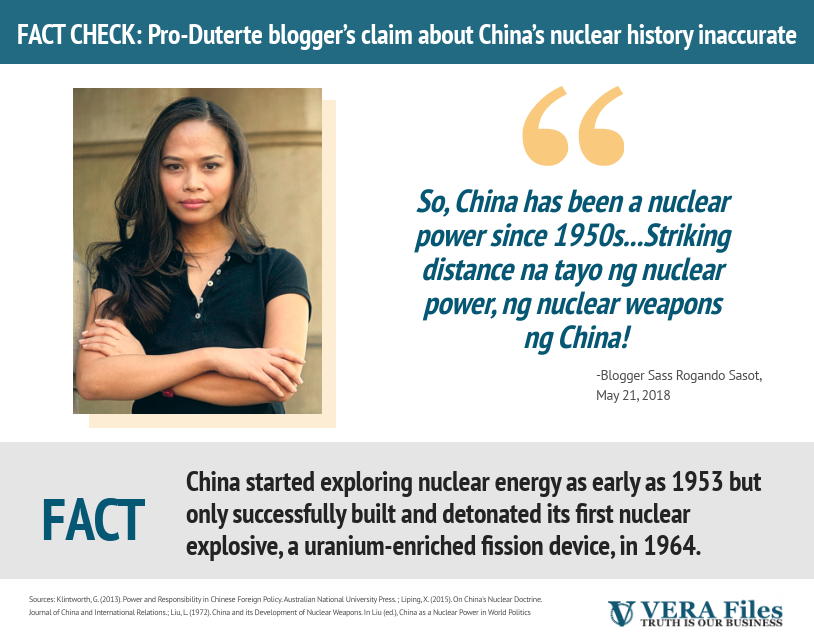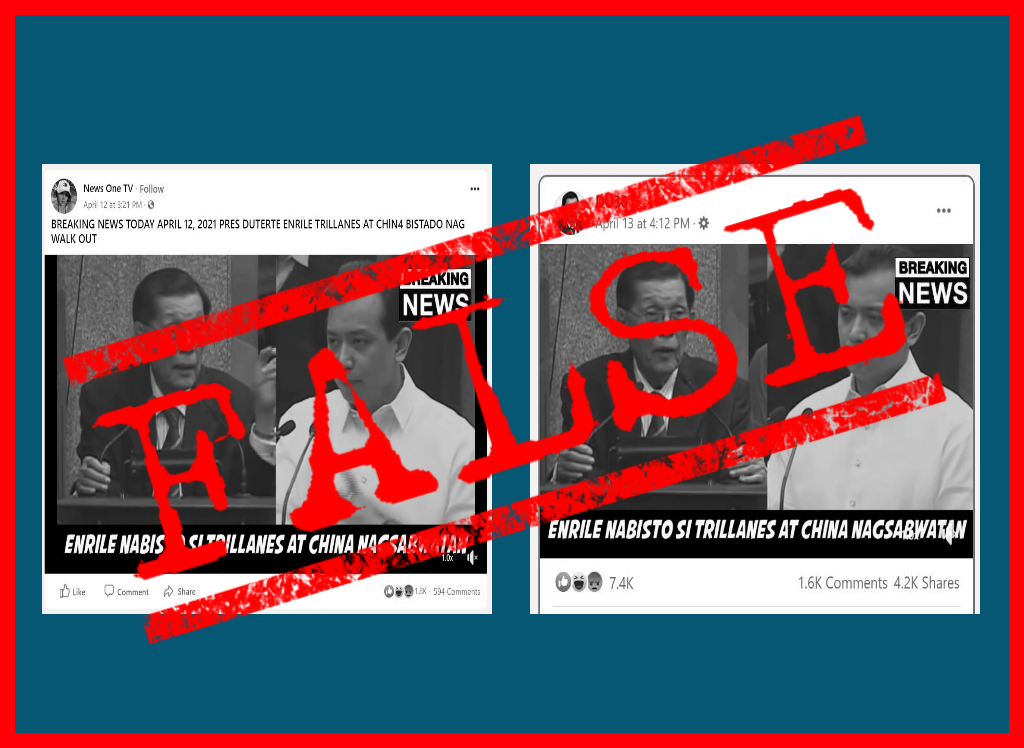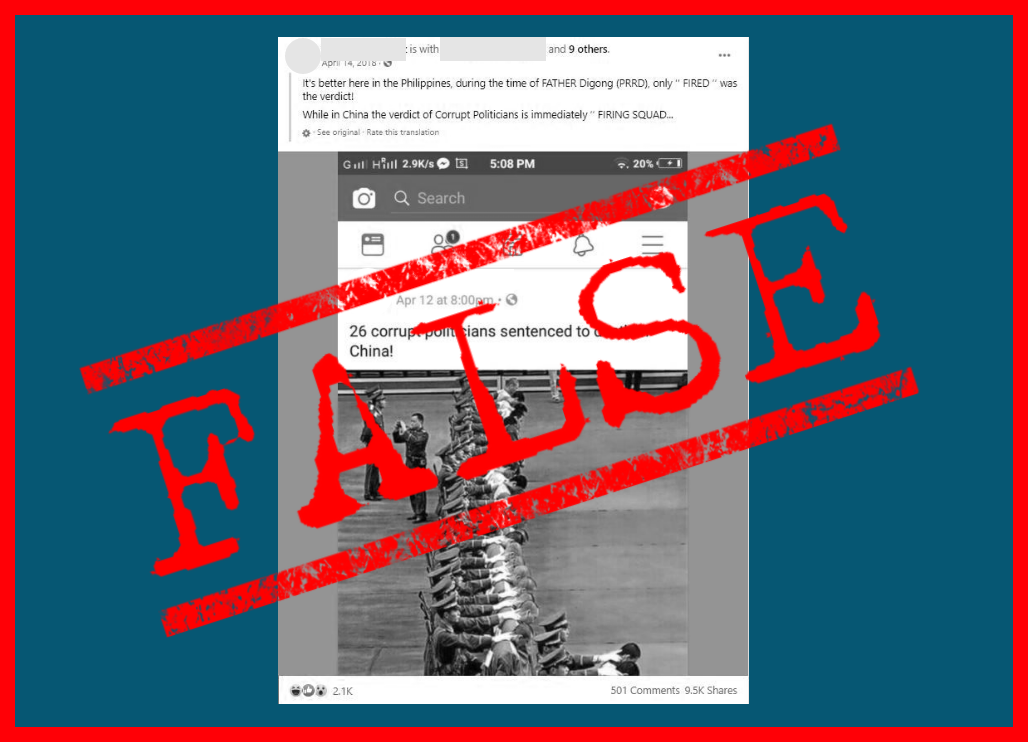
Blogger and Duterte supporter Sass Rogando Sasot, reacting to Sen. Risa Hontiveros’ statement of concern over China’s “threat of a nuclear war” against the Philippines, inaccurately claimed that China has been “a nuclear power since the 1950s.”
Hontiveros urged the Duterte administration May 20 to review the country’s ties with China and discuss with the United Nations reports that China’s nuclear-capable bombers have landed in the South China Sea.
“We can’t call a country that robs us of our islands and threatens us with nuclear war a friend,” she said in a statement.
STATEMENT
Sasot in a 17-minute Facebook video the next day slammed Hontiveros:
“Risa, ano ba itong katangahan mo (what is this stupidity)? My God. Unang-una (First of all), China has been a nuclear power since the 50s!”
Source: For the Motherland – Sass Rogando Sasot, May 21, 2018, watch from 2:23 to 2:32
She repeated the claim at 2:54 and 3:54 into the video and challenged the senator to an international relations debate:
“Risa, uulitin ko (I’ll repeat), China has been a nuclear power at least since the 1950s, and we had territorial disputes with China since we officially entered the fray in [sic] 1970s.”
Source: For the Motherland – Sass Rogando Sasot, May 21, 2018, watch from 2:54 to 3:01
“So, China has been a nuclear power since 1950s. At least 1950s, ‘di ba (right)? 1970s they were a nuclear power. And in that time, we were [sic] striking distance… Bakla ka ng taon, ‘teh (You’re gay of the year, sister). (We were within) striking distance na tayo ng (of the) nuclear power, ng nuclear weapons ng (of) China!”
Source: For the Motherland – Sass Rogando Sasot, May 21, 2018, watch from 3:54 to 4:18
FACT
Sasot’s claim is inaccurate.
The Philippines could not have been “within striking distance” of China’s nuclear weapons since the 1950s because China did not own nuclear weapons back then.
Brandon University Professor Leoh Yueh-Yun Liu, chronicling the history of nuclear weapons development in China, notes that the country started exploring nuclear energy as early as 1953 but only successfully built and detonated its first nuclear explosive, a uranium-enriched fission device, in 1964:
“Through its determination and intensive effort, Communist China successfully conducted its first nuclear test on 16 October 1964, on the test grounds at Lop Nor in Sinkiang province. It was a fixed explosion on a 70-metre steel tower.”
Source: Liu, L. (1972). China and its Development of Nuclear Weapons. China as a Nuclear Power in World Politics. p. 35.
China, after five nuclear tests, detonated its first hydrogen bomb in 1967:
“Then, on 17 June 1967, came the sixth test, which consisted of a hydrogen bomb dropped from a high-flying TU-16. Its blast produced a powerful yield equivalent to three to seven megatons of T.N.T. (trinitrotoluene).”
Source: Liu, L. (1972). China and its Development of Nuclear Weapons. China as a Nuclear Power in World Politics. p. 36.
A 2013 study on China’s arms control policy notes:
“Until 1964, China had no real policy on nuclear weapons and arms control. It was rather more concerned about building a credible nuclear capability.”
Source: Klintworth, G. (2013). Power and Responsibility in Chinese Foreign Policy. Australian National University Press. p. 221.
On China’s nuclear policy, a 2015 study notes:
“On the first day of gaining nuclear weapons, China declared its nuclear policy as follows:
- China conducted the nuclear test only for the purpose of defense
- Not to be the first to use nuclear weapons at any time or under any circumstances.”
Source: Liping, X. (2015). On China’s Nuclear Doctrine. Journal of China and International Relations. p. 168.
Sasot’s Facebook video, which has gained some 550,000 views, was carried by Good News Network website in a May 21 post, “Sass Rogando Sasot hinamon si (challenged) Sen. Risa Hontiveros sa (to a) debate dahil sa katangahan niya (because of her stupidity).”
Sasot’s Facebook page has 631,758 followers.
Sources:
China’s Choice for Nuclear Power and a Closed Nuclear Fuel Cycle, Carnegie Endowment for International Peace, May 14, 2018.
Hontiveros on Chinese nuclear-capable bombers: Review Bilateral Relations with China: File Reso Before UN, Senate.gov.ph, May 20, 2018.
Klintworth, G. (2013). Power and Responsibility in Chinese Foreign Policy. Australian National University Press.
Liping, X. (2015). On China’s Nuclear Doctrine. Journal of China and International Relations.
Liu, L. (1972). China and its Development of Nuclear Weapons. In Liu (ed.), China as a Nuclear Power in World Politics, pp. 33-45. New York: Palgrave MacMillan.
(Guided by the code of principles of the International Fact-Checking Network at Poynter, VERA Files tracks the false claims, flip-flops, misleading statements of public officials and figures, and debunks them with factual evidence. Find out more about this initiative and our methodology.)




